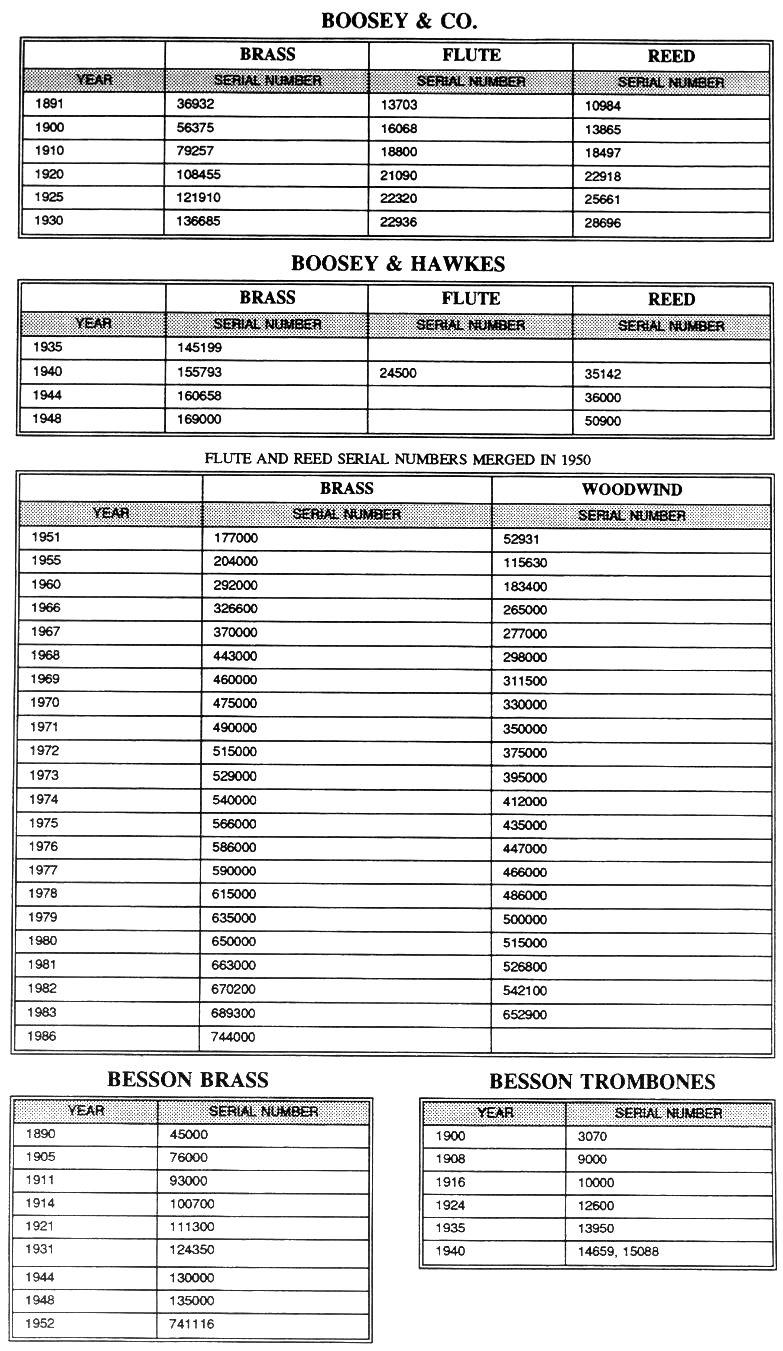
1931: Acquisition of Millereau, a brass manufacturer. Variant of the 'Super' saxophone released, nicknamed the 'Cigar Cutter' because of a slotted plate on the octave mechanism that resembles a cigar cutter. 1930: Manpower rises to 175 people who manufacture 300 instruments per month. 9909) with 12 amethysts for the Barcelona International Exposition. Presentation of a special model of saxophone (no. Release of the 'New Largebore' model saxophone, establishing the fundamental design of the 'Super' series. Production of the 'Adolphe Sax' model saxophones continues under Selmer until 1935. 1929: Purchase of the almost bankrupt workshops of Edouard Sax, direct descendant of Adolphe Sax. Bundy was appointed the sole distributor for Selmer (Paris) instruments in the United States. There was no remaining financial connection between the Selmers, in Paris, and Selmer in America. Buffet clarinet serial number lookup full#
Conn's interests in H&A Selmer Inc., gaining full ownership. Grand prize at the International Exhibition of Geneva, for the production as a whole. Stamped on all Selmer Paris instruments, this original logo is still used today as the seal of authenticity for the original 'Henri Selmer Paris'. 1926: A new logotype 'Henri Selmer Paris' is adopted: the laurel wreath replaces the lyre.The workshop at Place Dancourt is reserved for welcoming musicians. Three new workshops are constructed: one for reeds, two for saxophones. with Selmer (Paris) retaining a minority interest. 1923â∲4: Selmer's New York retail operation incorporated as H&A Selmer Inc.Selmer then counts 50 instrument makers who manufacture 30 saxophones per month.

The whole family is offered, including a c-melody saxophone. The 'Series' 22 makes way for the 'Model 22'. 1922: 31 December 1922, the first Selmer saxophone is finished: a 'Series 22' alto.Other saxophone manufacturers, like Dolnet and Evette-Scheaffer, are already established in this city. 1919: Opening of a new factory in Mantes whose technical direction is headed by Maurice and Henri Lefèvre, both sons-in-law of Henri Selmer.Alexandre, after having opened his first shop in the United States, decides to return to France, entrusting the management to one of his students, George Bundy. 1910: Maurice Lefèvre, Paul Lefèvreâs second son, joins the Selmer Paris team.There, he has the opportunity to play under the conductor Gustav Mahler. 1909: Alexandre Selmer joins the New York Philharmonic Orchestra as first clarinetist.This first structure will later become the H&A Selmer (USA) company. The following year, Alexandre officially establishes himself in New York USA, where he starts selling the Selmer Paris clarinets. Henri takes over the Barbier Company (a flute manufacturer, rue du faubourg Saint Denis, in Paris).
 1905: Paul Lefèvre and his son Henri, who had been working for Maison Robert (a clarinet manufacturer), join Henri Selmer's team. This will strongly contribute to the development of their sales in the US. From 1903, he plays the clarinets his brother is manufacturing in France. During this period Alexandre Selmer, Henri's brother, has been first clarinetist in the Cincinnati Symphony Orchestra for two years. 1904: The Selmer Paris clarinets are presented for the first time at the International Saint Louis Fair (USA), where Henri wins a Gold Medal. 1900: Henri wins his first Bronze Medal in the Paris Exhibition. 1864), joins the Boston Symphony Orchestra as a clarinetist, remaining until 1901. The same year his younger brother, Alexandre (b. From 1898, with the help, Henri Selmer starts manufacturing clarinets and settles his workshop at 4, place Dancourt, Paris. 1885: Creation of the Selmer Paris company: Henri Selmer begins manufacturing reeds and mouthpieces.
1905: Paul Lefèvre and his son Henri, who had been working for Maison Robert (a clarinet manufacturer), join Henri Selmer's team. This will strongly contribute to the development of their sales in the US. From 1903, he plays the clarinets his brother is manufacturing in France. During this period Alexandre Selmer, Henri's brother, has been first clarinetist in the Cincinnati Symphony Orchestra for two years. 1904: The Selmer Paris clarinets are presented for the first time at the International Saint Louis Fair (USA), where Henri wins a Gold Medal. 1900: Henri wins his first Bronze Medal in the Paris Exhibition. 1864), joins the Boston Symphony Orchestra as a clarinetist, remaining until 1901. The same year his younger brother, Alexandre (b. From 1898, with the help, Henri Selmer starts manufacturing clarinets and settles his workshop at 4, place Dancourt, Paris. 1885: Creation of the Selmer Paris company: Henri Selmer begins manufacturing reeds and mouthpieces.  2 Historical list of Selmer instruments. Among famous Selmer Clarinet players is Benny Goodman in his early career. Selmer Paris instruments have been played by many well-known saxophonists such as Marcel Mule, Claude Delangle, Frederick Hemke, Charlie Parker, John Coltrane, Paul Desmond, Herschel Evans, Zoot Sims, Michael Brecker, Sonny Rollins, Ornette Coleman and Coleman Hawkins.
2 Historical list of Selmer instruments. Among famous Selmer Clarinet players is Benny Goodman in his early career. Selmer Paris instruments have been played by many well-known saxophonists such as Marcel Mule, Claude Delangle, Frederick Hemke, Charlie Parker, John Coltrane, Paul Desmond, Herschel Evans, Zoot Sims, Michael Brecker, Sonny Rollins, Ornette Coleman and Coleman Hawkins.







 0 kommentar(er)
0 kommentar(er)
